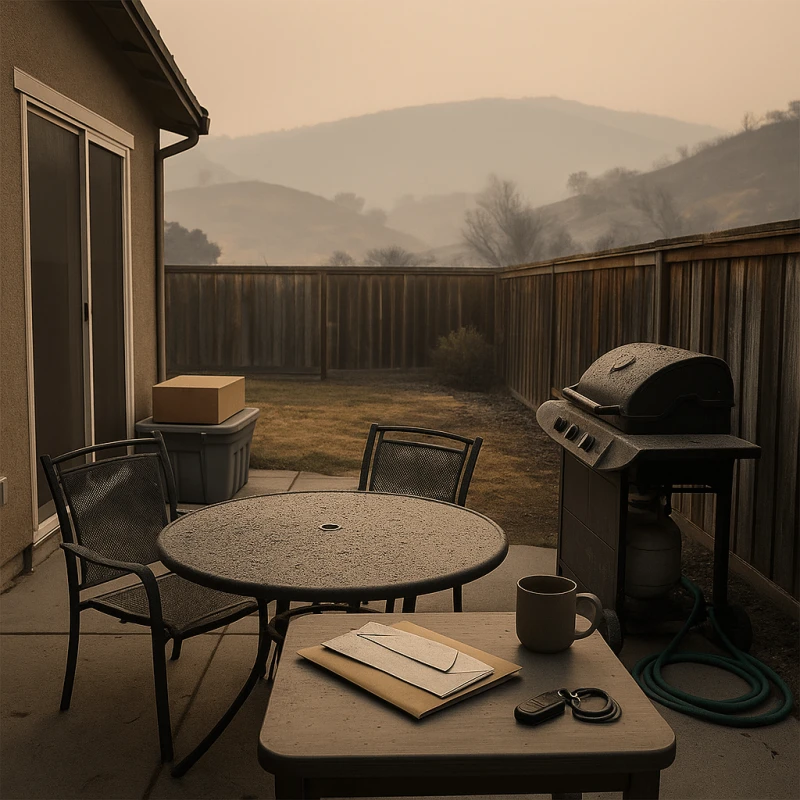Wildfires don’t just scorch landscapes—they disrupt housing, routines, and budgets. While your insurance and legal claims move forward, essentials like rent, food, and temporary housing still add up. Wildfire Property Damage Legal Funding offers short-term financial support aligned to the potential value of your claim so you can keep life moving during recovery.
This guide explains how funding works for property damage linked to wildfires, who may qualify, what reviewers consider, timelines, costs, and practical tips to stay organized. It’s written to inform and support—not to pressure a decision.
What Counts as Property Damage in Everyday Terms
Property losses after a wildfire often include burned structures, smoke damage to interiors and contents, soot and ash infiltration, water damage from firefighting, and contamination that requires specialized cleaning. Even homes that did not burn can have persistent smoke residues that affect belongings, HVAC systems, and indoor air quality. Authoritative disaster resources note that smoke and water can damage items that weren’t touched by flames, and returning home should be done with caution.
If you’re working with an attorney on a wildfire-related property claim (homeowners, renters, or business), you may be eligible for funding that helps with essentials while your case progresses. Reviews emphasize case documentation and your attorney’s input rather than personal credit history.
How Property Damage Legal Funding Works With Your Attorney
After you apply, the funding team coordinates directly with your lawyer. They request focused materials—claim summary, status, key correspondence, estimates, and upcoming milestones—to estimate potential case value efficiently. This light-touch process aims to minimize disruption for you and your legal team.
If approved, funds can be used for necessities such as temporary housing, utilities, groceries, transportation, childcare, or storage. When your case resolves, your attorney typically addresses repayment from the proceeds before distributing the remainder to you. This keeps the process organized and aligned with your recovery plan.
Why Homeowners and Renters Consider Funding After Wildfires
Recovery takes time, especially when adjusters, contractors, and environmental cleaning are involved. Funding can stabilize cash flow if you’re facing relocation expenses, higher living costs, or delayed claim payments. It can also provide breathing room to evaluate settlement options thoughtfully with your attorney rather than under immediate financial pressure.
Many households use funding to cover additional living expenses (ALE)—the gap between ordinary costs and temporary needs like hotels, meals, laundry, or storage—while their home is repaired or remediated. Industry and insurance resources highlight that fire and smoke are typically covered perils in standard policies, and water damage from firefighting may also be covered, though terms vary by policy.
Eligibility Factors: What Reviewers Commonly Consider
Each provider has its own process, but reviewers generally look at:
- Active representation and claim status. You’re working with an attorney on an open wildfire-related property claim.
- Documentation and posture. Photos, inventories, estimates, remediation reports, insurer communications, and displacement details.
- Evidence and potential value. Extent of burn, smoke, soot, and water damage; contents losses; and expected recovery ranges.
- Timeline and milestones. Inspections, estimates, remediation, negotiations, or other steps that may influence claim value.
Your credit score or current employment usually matters less than the strength and documentation of your claim.
Understanding Displacement, Debris, and Health Considerations
Wildfire recovery can involve debris removal, structural assessments, and environmental cleanup. Federal resources explain that communities may coordinate debris operations, and survivors can check assistance options and declared disasters through official portals. Public health guidance emphasizes returning only when authorities say it’s safe and taking precautions to limit exposure to ash and smoke residues.
Homeowners may also review smoke remediation guidance that discusses post-cleaning testing and filtration to ensure long-term habitability before fully reoccupying a home. This helps set expectations for timelines and documentation that can matter in a funding review.
Applying for Property Damage Legal Funding
Most applications are straightforward. You provide contact details, your attorney’s information, and a short claim summary. The provider then connects with your lawyer to request the documents needed for evaluation, focusing on clarity and speed.
If you’re researching terminology across case types, this lawsuit loan explainer offers helpful context. For broader timing considerations while a claim is pending, see pre settlement funding to understand how approvals often align with case milestones.
Costs, Timing, and Right-Sized Expectations
Costs and timelines vary with claim complexity and documentation clarity. Large-scale fire events can create backlogs with contractors and adjusters, so organized records can help reviews move faster. Ask for plain-English explanations of pricing, fees, how charges accrue, and how repayment is handled at resolution so you know what to expect.
When deciding on an amount, focus on essentials: temporary housing, utilities, food, transportation, medical needs, and core household items. Right-sizing support helps keep you stable without taking on more obligation than you truly need. Your attorney can help you see how proposed terms fit your overall recovery plan.
Practical Documentation Tips to Keep the Process Smooth
A few small habits can streamline both your claim and potential funding:
- Centralize your records. Save estimates, inventories, remediation reports, receipts, and insurer communications in one place.
- Track displacement costs. Keep receipts for hotels, meals, laundry, storage, and commuting while you’re out of the home.
- Photograph contents methodically. Before and after cleaning, plus any items deemed non-restorable by vendors.
- Stay in sync with your attorney. Share updates from adjusters, hygienists, and contractors promptly.
These steps support a predictable review and reduce back-and-forth for everyone involved.
How Funding Supports a Thoughtful Recovery Timeline
Financial pressure can push households toward quick decisions that don’t fully address long-term restoration needs. With essentials covered, you and your attorney can evaluate scopes of work, compare estimates, and time negotiations on the merits rather than urgency. Stable footing helps you focus on remediation quality, contents decisions, and a safe return home.
Trusted Resources for Wildfire Survivors
- FEMA Individual Assistance: Where to check eligibility and apply for disaster assistance after declared events.
- CDC – After a Wildfire: Guidance for safely returning and limiting exposure to smoke and ash.
- Insurance Information Institute (III) – Wildfires: What standard policies typically cover for fire, smoke, and water damage.
- U.S. Fire Administration – After the Fire: Plain-language overview of how fire, smoke, and water affect homes and contents. U.S. Fire Administration
- NIFC – Prepare and Protect Your Home: Mitigation perspective relevant to understanding damage patterns.
Review these alongside your attorney’s guidance to understand timelines and documentation that may also inform funding decisions.
FAQ
What kinds of wildfire-related losses are typically considered in funding reviews?
Reviews often consider structural damage, smoke and soot contamination, water damage from firefighting, contents losses, and displacement costs documented through estimates, reports, and receipts. Authoritative sources note that smoke and water can affect items far from the burn area, so detailed inventories matter.
Can I apply if I’m living in temporary housing or staying with family?
Yes. Funding is often used to help with additional living expenses—hotel stays, meals, laundry, storage, and commuting—while repair and remediation progress. Insurance resources describe ALE as a standard part of many homeowners and renters policies, though limits and proof requirements apply.
Do I need excellent credit to qualify?
Funding decisions typically emphasize the strength of your documented claim and your attorney’s input rather than your credit score. Clear records and coordinated communication usually matter most for timing and amounts.
If property damage has strained your budget and you want to explore Property Damage legal funding aligned with your claim, contact Rockpoint Legal Funding. We coordinate with your attorney, review documentation efficiently, and help you consider practical options to stay current on essentials while your recovery advances.


